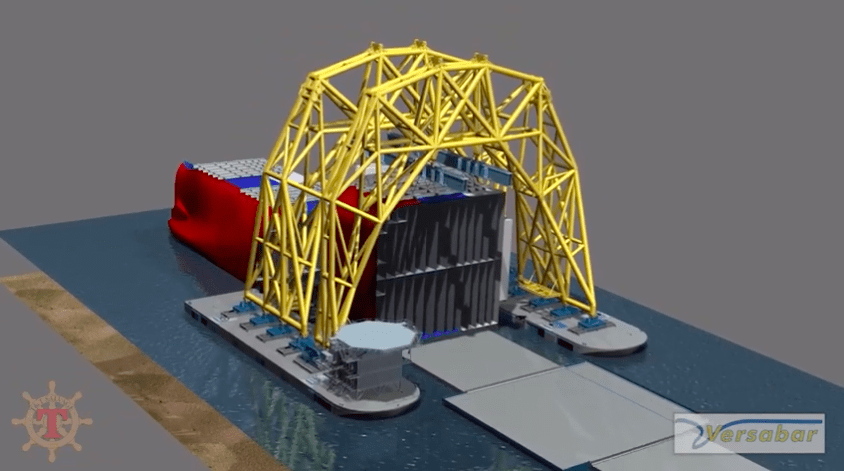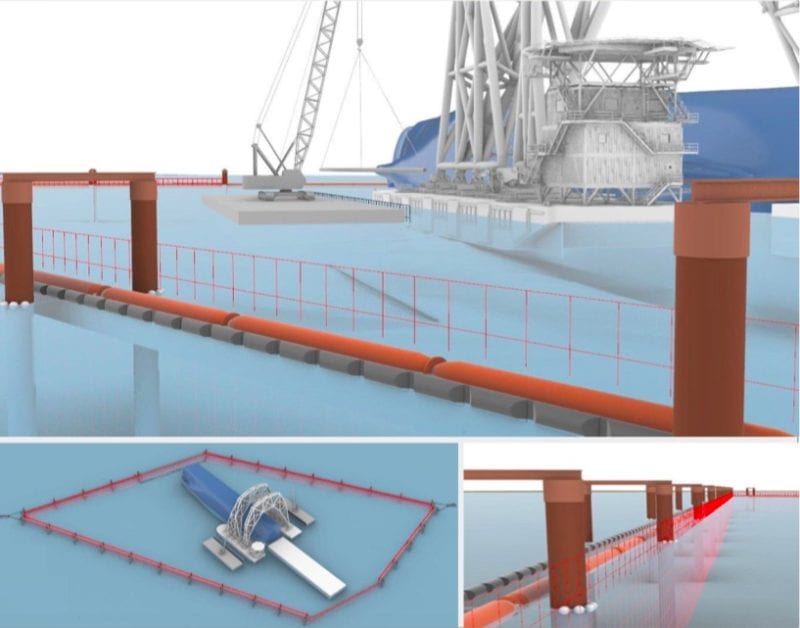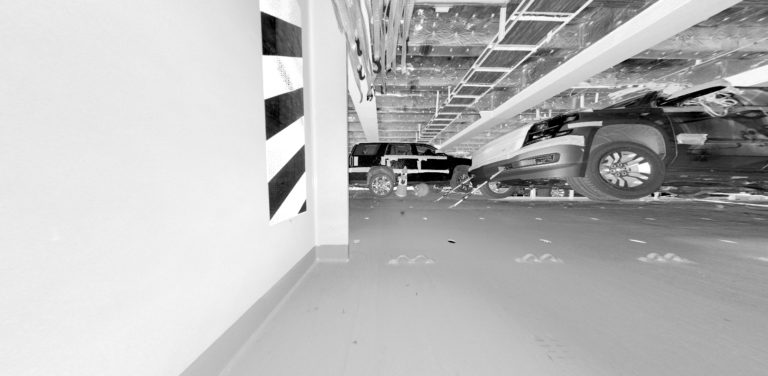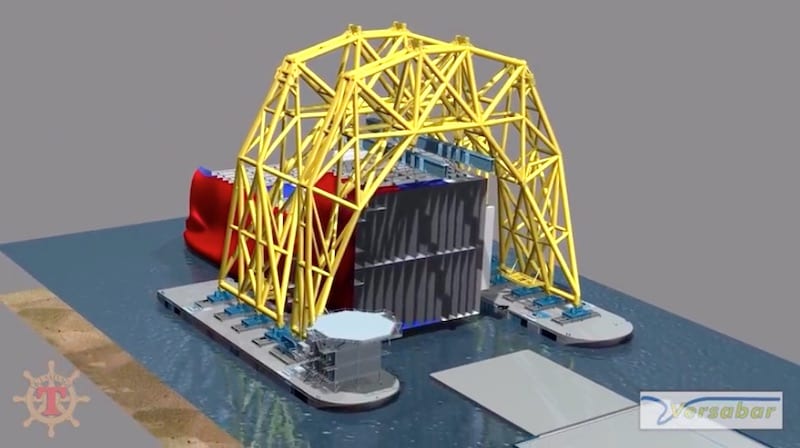Engine Room Fire on Containership Injures Four at Port of Wilmington
Firefighters were called to the Port of Wilmington on Wednesday morning after flames erupted in the engine room of a docked vessel. The emergency call came in at 9:28 a.m....

The Unified Command has released details of how they plan to cut up and remove the overturned Golden Ray car carrier in St. Simons Sound, Georgia.
The plan calls for the use of Versabar’s unique VB-10,000 heavy lifting vessel equipped with a large, diamond-encrusted cutting chain that will cut the wreck into large sections for removal by barge.
According to the Unified Command, the VB-10,000 will make seven cuts, splitting the ship into eight sections weighing 2,700 to 4,100 tons apiece. The vessel will then lift the sections onto a barge for transport to an off-site recycling facility.
The public should expect a lot of noise throughout the operation.
“There’s no way to remove the Golden Ray without making noise—there’s no way around it,” said Kevin Perry of Gallagher Marine Systems, incident commander for the responsible party. “The EPB construction noise will be limited to daylight hours. We appreciate everyone’s patience with the noise levels as we work to remove this wreck as quickly and safely as possible.”

Prior to the cutting operation, crews will construct a so-called “environmental protection barrier” that will have a large floating boom to help contain surface pollutants and double layer netting to contain subsurface debris. Environmental monitoring will also take place both inside and outside of the barrier.
“We recognize that the floating boom of the EPB alone will probably not be enough to contain surface pollution when we cut into the hull,” said Coast Guard Cmdr. Norm Witt, federal on scene coordinator for the response. “That’s why we’ll have crews and equipment, both inside the barrier and out, ready to respond.”

The 656-foot Golden Ray was carrying about 4,200 vehicles when it lost stability and grounded in St. Simons Bay as it departed Georgia’s Port of Brunswick on 8 September 2019. All the vehicles remain trapped inside the inaccessible cargo holds.

Officials say construction of the barrier is already permitted and expected to begin in about two weeks, with pile driving taking place during daylight hours. Cutting will follow, but the exact timing has not been finalized.
“Each individual large-section cut will take approximately 24 hours, and once a cut begins, must continue until that cut is complete,” said John Maddox, Georgia Department of Natural Resource state on scene coordinator. “That means noise through the night during some 24-hour periods. We do not yet know when the cutting will begin, but we will make announcements for cutting operations once they are scheduled.”

The UC for the St. Simons Sound Incident Response is comprised of the Coast Guard as the federal on scene coordinator, the Georgia Department of Natural Resource (DNR) as the state on scene coordinator, and Gallagher Marine Services as the incident commander for the responsible party.
Built in 2010, the VB 10000 is a heavy lifting vessel designed for decommissing and installation of offshore oil and gas topsides with a single lift. The vessel is equipped with twin-gantry cranes with a hook height of 178 feet and maximum lifting capacity is 7,500 tons. For previous jobs, the vessel has been equipped with a set of massive 1,100-ton purpose-built “Claws”, allowing the vessel to retrieve large sunken objects and debris.

Sign up for gCaptain’s newsletter and never miss an update

Subscribe to gCaptain Daily and stay informed with the latest global maritime and offshore news
Essential news coupled with the finest maritime content sourced from across the globe.
Sign Up